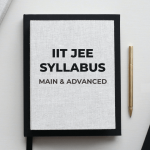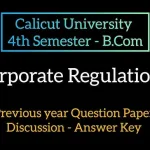The Bihar Public Service Commission (BPSC) conducts exams for various posts in the Bihar state government. Understanding the syllabus thoroughly is crucial for effective preparation and cracking the exam. The BPSC syllabus is extensive and includes subjects like General Studies, General Hindi, and optional subjects, depending on the specific exam or post. This article will walk you through the BPSC syllabus, focusing on what students need to know and how to prepare effectively.
Introduction to the BPSC Syllabus
The BPSC syllabus provides a roadmap for students to understand what topics and subjects will be covered in the examination. The syllabus is designed to test a candidate’s knowledge of general studies, current affairs, reasoning, and subject-specific expertise, all of which are vital for the job roles offered by the Bihar government. For each year, the syllabus may have minor changes or updates, so it’s important to stay current with the latest version.
This guide will cover the syllabus for the current academic year as well as a comparison with the last five years. Let’s dive into the details.
BPSC Syllabus Breakdown for the Current Year
1. General Studies Paper 1
This paper covers a wide range of topics, divided into several key sections. Here’s a breakdown of the main units:
-
History of India and Indian National Movement: This includes the ancient, medieval, and modern history of India, covering major dynasties, freedom movements, and important historical figures. Students will need to understand the socio-political changes in Indian history.
-
Geography of India and the World: Topics include physical geography, climate, vegetation, agriculture, and the impact of global warming. You will also study the geographical setup of India and global phenomena.
-
Indian Polity and Governance: This unit focuses on the Constitution of India, the structure of the government, and the functioning of democratic institutions. Key topics include Parliament, the judiciary, and the state government systems.
-
Economic and Social Development: This section includes topics on sustainable development, poverty, social justice, and the role of various institutions like the RBI, Planning Commission, and NITI Aayog in economic development.
-
Environmental Ecology, Biodiversity, and Climate Change: This unit focuses on environmental issues, conservation efforts, and global environmental challenges. Students should focus on international environmental conventions and the current state of biodiversity in India.
-
General Science: Questions in this section are designed to test the candidate’s general understanding of science. Topics include Physics, Chemistry, and Biology in the context of daily life, including technological advancements.
-
Current Affairs: This section tests knowledge on current events in national and international politics, sports, economics, and the environment. Regular reading of newspapers and magazines will help stay updated.
2. General Studies Paper 2 (CSAT)
-
Comprehension: This part includes passages followed by questions testing reading comprehension skills.
-
Logical Reasoning and Analytical Ability: Problems related to sequences, patterns, puzzles, and general reasoning. The goal is to assess the candidate’s ability to analyze and solve problems.
-
Decision Making and Problem Solving: Questions in this section focus on assessing a candidate’s decision-making skills, which are critical for administrative roles.
-
Basic Numeracy and Data Interpretation: This includes simple calculations and problems involving percentages, ratios, and averages. You may also be asked to interpret graphs and data sets.
-
English Language Comprehension: It tests your ability to understand and interpret English texts, along with grammar and vocabulary.
3. Optional Subject Paper
For this paper, candidates can choose from a range of subjects. The syllabus for each subject is vast and specific, so selecting a subject that aligns with your academic background or interests is crucial.
Examination Pattern and Marks Distribution
The BPSC exam is divided into three stages:
-
Preliminary Exam (Objective Type)
- General Studies Paper: 150 marks
- CSAT (General Studies Paper 2): 150 marks (qualifying in nature)
-
Main Exam (Written)
- General Studies Paper 1: 200 marks
- General Studies Paper 2: 200 marks
- Optional Subject Paper: 200 marks each
-
Interview
- The interview carries 120 marks and is conducted for candidates who have qualified the written exams.
Types of Questions
- Multiple Choice Questions (MCQs): Most of the preliminary exam consists of MCQs. It’s important to practice solving these questions with time limits.
- Descriptive/Long Answer Questions: The main exam consists of descriptive answers, where you are expected to write in detail on specific topics.
- Short Answer Questions: This format requires concise and precise answers.
Study Materials and Recommended Resources
To prepare effectively, here are some of the best study materials and resources for the BPSC syllabus:
-
Books for General Studies
- Indian Polity by M. Laxmikanth
- Modern India by Bipin Chandra
- Indian Economy by Ramesh Singh
- Geography of India by Majid Husain
- Environment and Ecology by Majid Husain
-
Current Affairs
- Read newspapers like The Hindu or The Indian Express daily.
- Monthly current affairs magazines like Pratiyogita Darpan and Yojana are also helpful.
-
Practice Papers and Mock Tests
- Regularly attempt previous years’ question papers.
- Online mock tests and quizzes can help with time management and self-assessment.
Overview of the Last 5 Years’ Syllabi
Year 2024
The syllabus for this year remains similar to the current year’s syllabus, with a continued emphasis on General Studies and CSAT. However, the syllabus for the optional subjects has been expanded to include emerging topics in subjects like Environmental Science and Anthropology.
Year 2023
The major change in 2023 was the introduction of more case studies in the General Studies papers. A stronger focus on current affairs and contemporary issues was observed in the CSAT.
Year 2022
In 2022, the optional subject papers saw more in-depth inclusion of contemporary global issues. There was also a rise in questions related to technological advancements in India, including the digital economy.
Year 2021
The syllabus in 2021 had a similar structure, but there was a greater focus on national issues such as rural development, health policies, and governance reforms.
Year 2020
In 2020, there were fewer questions on regional issues, and the syllabus focused more on national topics related to politics, economics, and governance.
Study Tips and Exam Preparation Strategies
-
Stay Organized: Use a study planner to manage your time effectively. Allocate time for each section of the syllabus based on its importance and your comfort level with the subject.
-
Revise Regularly: Revise important topics frequently. Make use of notes, flashcards, and mind maps to retain key concepts.
-
Focus on Previous Year Papers: Practice as many previous year papers as you can. This helps you get familiar with the question pattern and manage time during the exam.
-
Stay Updated with Current Affairs: Make current affairs a part of your daily routine. Read newspapers and magazines, and follow news channels.
-
Take Care of Your Health: Maintain a healthy lifestyle with regular breaks and a balanced diet to keep your mind sharp.
The BPSC syllabus is vast but manageable with the right strategy and resources. By understanding the structure and focusing on key areas, you can prepare effectively for the exam. Remember, consistency, regular practice, and staying up-to-date with current affairs are essential for success. Good luck with your preparation!
FAQ for BPSC Syllabus in Hindi
बिहार लोक सेवा आयोग (BPSC) की परीक्षा को पास करने के लिए सही दिशा में तैयारी करना बेहद जरूरी है, और इसके लिए BPSC सिलेबस को समझना बेहद महत्वपूर्ण है। यहां हम BPSC सिलेबस से संबंधित कुछ सामान्य प्रश्नों का उत्तर देंगे, जो उम्मीदवारों को उनकी तैयारी में मदद करेंगे।
1. BPSC सिलेबस क्या है?
BPSC सिलेबस उन सभी विषयों और टॉपिक्स का एक विस्तृत विवरण है, जो BPSC परीक्षा में पूछे जाते हैं। इसमें जनरल स्टडीज, जनरल हिंदी, और वैकल्पिक विषयों के अंतर्गत आने वाले टॉपिक्स शामिल होते हैं। यह सिलेबस उम्मीदवारों को यह समझने में मदद करता है कि उन्हें किस विषय पर ज्यादा ध्यान देना चाहिए।
2. BPSC के परीक्षा पैटर्न में क्या बदलाव हो सकते हैं?
हर साल BPSC परीक्षा पैटर्न में कुछ बदलाव हो सकते हैं, जैसे कि प्रश्नों की संख्या, विषयों का वितरण, और आंतरिक बदलाव। उम्मीदवारों को हमेशा आधिकारिक BPSC वेबसाइट पर जाकर सिलेबस और परीक्षा पैटर्न की पुष्टि करनी चाहिए, ताकि वे किसी भी नए बदलाव से अवगत रह सकें।
3. BPSC परीक्षा के लिए कौन-कौन से विषय होते हैं?
BPSC परीक्षा में मुख्य रूप से दो प्रकार के विषय होते हैं:
- जनरल स्टडीज पेपर: इसमें भारतीय राजनीति, इतिहास, भूगोल, पर्यावरण, विज्ञान, और सामयिकी जैसी विधाएं शामिल होती हैं।
- वैकल्पिक विषय पेपर: उम्मीदवार अपने विशेषज्ञता के आधार पर एक वैकल्पिक विषय चुन सकते हैं जैसे कि समाजशास्त्र, भूगोल, राजनीति विज्ञान, आदि।
4. BPSC सिलेबस में कौन-कौन से महत्वपूर्ण टॉपिक्स हैं?
BPSC सिलेबस में कुछ महत्वपूर्ण टॉपिक्स हैं:
- भारतीय संविधान और राजनीति
- भारतीय इतिहास और राष्ट्रीय आंदोलन
- भारतीय भूगोल और जलवायु
- पर्यावरण और पारिस्थितिकी
- सामान्य विज्ञान और तकनीकी विकास
- समसामयिकी
इन टॉपिक्स को अच्छे से समझना और इन पर ध्यान केंद्रित करना परीक्षा की सफलता के लिए महत्वपूर्ण है।
5. क्या BPSC सिलेबस में कोई सालाना बदलाव होते हैं?
हाँ, BPSC सिलेबस में छोटे-मोटे बदलाव हर साल हो सकते हैं, विशेष रूप से समसामयिकी के मामलों में। इसलिए, उम्मीदवारों को हमेशा नवीनतम सिलेबस की जानकारी प्राप्त करनी चाहिए और उसी के अनुसार तैयारी करनी चाहिए।
6. BPSC के लिए अध्ययन सामग्री कहां से प्राप्त की जा सकती है?
BPSC के लिए अध्ययन सामग्री पुस्तकालयों, ऑनलाइन प्लेटफार्मों, और कोचिंग संस्थानों से प्राप्त की जा सकती है। कुछ प्रमुख किताबें हैं:
- भारतीय संविधान – M. Laxmikanth
- भारतीय राजनीति – Bipin Chandra
- सामान्य विज्ञान – Lucent’s General Science
- पर्यावरण और पारिस्थितिकी – Majid Husain
साथ ही, रोज़ाना समाचार पत्र पढ़ना और समसामयिकी पर ध्यान देना भी आवश्यक है।
7. BPSC परीक्षा में कितने पेपर होते हैं?
BPSC परीक्षा में मुख्य रूप से तीन चरण होते हैं:
- प्रारंभिक परीक्षा (Objective Type): इसमें दो पेपर होते हैं – जनरल स्टडीज और CSAT (क्वालीफाइंग पेपर)।
- मुख्य परीक्षा (Written): इसमें जनरल स्टडीज और वैकल्पिक विषय के पेपर होते हैं।
- साक्षात्कार: अंतिम चयन के लिए साक्षात्कार आयोजित किया जाता है।
8. BPSC परीक्षा की तैयारी के लिए क्या टिप्स हैं?
- सिलेबस को समझें: सबसे पहले सिलेबस को अच्छे से समझें और उसे एक दिनचर्या के हिसाब से विभाजित करें।
- नियमित अध्ययन करें: रोजाना पढ़ाई करने की आदत डालें और महत्वपूर्ण विषयों पर विशेष ध्यान दें।
- प्रश्न पत्र हल करें: पिछले वर्षों के प्रश्न पत्र हल करें ताकि आपको प्रश्नों का पैटर्न समझ में आए।
- समय प्रबंधन: समय का सही उपयोग करने के लिए एक स्टडी प्लान बनाएं।
- स्वस्थ रहें: सही आहार और आराम से शरीर और मस्तिष्क को ताजगी मिलेगी, जो परीक्षा में सफलता के लिए जरूरी है|
Latest Posts
- Step-by-step guide to download and apply for jee mains admit card 202
- Comprehensive 2025 government holidays and recruitment details for job seekers
- JEE Mains Admit Card 2025: Your Step-by-Step Guide to Downloading the Hall Ticket
- Everything You Need to Know About 2025 Government Holidays Recruitment
- Comprehensive Guide to rrb d group recruitment 2025 – Eligibility, Vacancies, and Application
- Detailed guide to nps trust recruitment 2025 vacancies, eligibility and apply process
- Comprehensive guide to hpcl recruitment 2025 notification, vacancies, and application process
- ignou bed admission 2025 complete recruitment guide with eligibility and process
- Comprehensive Guide to Indian Army Agniveer Recruitment 2025 Notification and Jobs
- Everything You Must Know About CBSE Board Exams 2025 Changes & New Rules





